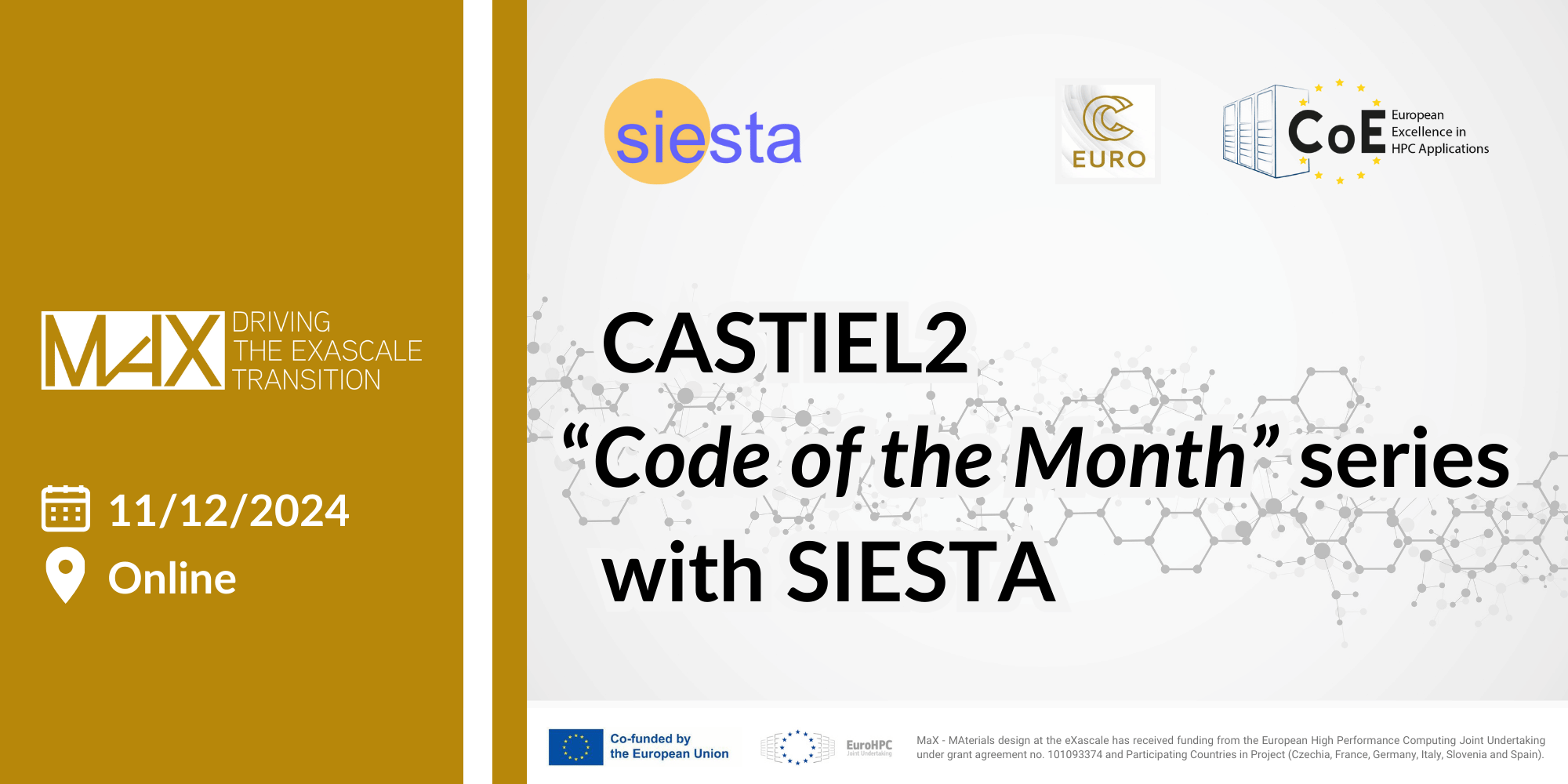
"SIESTA: a DFT code for large scale computational material science in HPC environments"
When: 11 December 2024
Where: online
Time: 11am-12am CET
Registration: Registration link
The webinar is produced within the framework of CASTIEL2 “Code of the Month” series and will showcase the MaX lighthouse code SIESTA: a high-performance computational program that performs efficient electronic structure calculations and ab initio molecular dynamics simulations of molecules and solids. SIESTA will be presented by MaX partner, and founder developer of the code, Pablo Ordejón (CSIC Research Professor and ICN2 Group Leader and Director).
SIESTA is a first-principles materials simulation program based on density-functional theory (DFT) that enables the treatment of large systems with first-principles electronic-structure methods. The possibility of treating large systems with some first-principles electronic-structure methods has opened up new opportunities in many disciplines. In recent years, SIESTA has been increasingly used by researchers in geosciences, biology, and engineering, apart from materials physics and chemistry. SIESTA is an open source code. It is used by several thousand users all over the world and the paper[1] describing the method has received more than 11,000 citations so far. The latest release of SIESTA[2] adds a number of new functionalities and sets a firm ground for future integrations that will extend the applicability and performance of the software. For a more comprehensive overview of SIESTA 5.0 release, please visit the dedicated release note on the SIESTA website.
Performance
In the past two years, the SIESTA team has worked to optimize the code and achieve best performance and scaling on different EuroHPC architectures (for more information, download the MaX Performance and Scalability brochure). SIESTA supports very diverse hardware architectures, including GPU acceleration via the ELPA library and massive parallelization with the PEXSI solver. SIESTA’s cost-effectiveness enables DFT calculations of hundreds of atoms even in personal computers. In HPC infrastructures, SIESTA can deal easily with calculations for thousands of atoms, giving it a distinct competitive advantage.
References and further readings
[1] The SIESTA method for ab initio order-N materials simulation
[2] MaX News | New Software Release: SIESTA 5.0
[3] MaX News | MaX releases its Performance & Scalability brochure
[4] For an overview of recent developments, and sample applications of SIESTA, see: J. Chem. Phys. 152, 204108 (2020).
____________________
Register to the webinar: Registration link.
After registering, you will receive a confirmation email containing information about joining the webinar.



